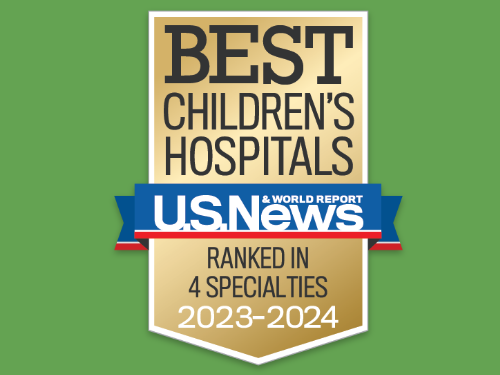Strokes can happen to anyone at any age. When a stroke strikes a baby or adolescent, they need specialized immediate and long-term care from a team who can help diagnose, treat and support children.
If you think your child may be having a stroke, do not wait to seek medical attention. Go to the nearest emergency room or call 911 as quickly as possible!
What Is a Stroke?
When blood vessels in the brain break or become blocked, an individual may suffer a stroke. A pediatric or adolescent stroke is a rare but serious condition in children and adolescents that can cause permanent brain damage.
Strokes occurring in babies, children and adolescents typically fall into one of three categories:
- Arterial Ischemic Stroke (AIS) is when an artery or arteries in the brain are blocked, often by a blood clot. This is the most common type of stroke in pediatric and adolescent patients.
- Cerebral Sinovenous Thrombosis (CSVT) ) is a type of ischemic stroke in which blood clots prevent veins in the brain from draining blood into larger areas known as the venous sinuses.
- Hemorrhagic Stroke (HS) occurs when blood leaks into brain tissue (intracerebral hemorrhage), the fluid-filled spaces surrounding the brain (subarachnoid hemorrhage), or the ventricles (intraventricular hemorrhage).
Pediatric and Adolescent Stroke Symptoms
Symptoms of stroke in babies, children and adolescents may occur suddenly and often will increase in severity over time. The most common symptoms include:
- Weakness or numbness of face or arm or leg, on one side of the body
- Difficulty moving or walking
- Slurred speech and difficulty and/or inability to speak or understand others
- Headache, often with double vision and vomiting
- Dizziness
- Seizures, especially occurring on one side of the body
Causes of Pediatric and Adolescent Stroke
The exact causes of stroke in children and adolescents are not well-defined, and stroke in children can happen for a number of reasons. However, certain conditions and diseases can bring on strokes including:
- Sickle cell anemia and other genetic/inherited conditions
- Blood clotting disorders, such as hemophilia
- Heart disease and congenital heart defects
- Head and/or neck trauma
- Moyamoya disease
- Metabolic disorders
- Drug abuse
Pediatric and Adolescent Stroke Diagnosis
The teams affiliated with Children’s Memorial Hermann Hospital can diagnose a pediatric and adolescent stroke using a variety of methods and tests, including:
- Gathering medical history
- Physical and neurological examinations
- Computed tomography (CT) scan
- Magnetic Resonance Imaging (MRI) with radiocontrast
- Conventional angiography
Treatment Options for Pediatric and Adolescent Stroke
Every patient is different. Working closely with a pediatric stroke team is always the best way to determine your child’s treatment plan. Children and adolescents presenting with stroke require immediate medical attention, and the treatments options vary depending on the cause of the stroke, but may include:
- Anti-coagulant medication
- Anti-platelet medication
- Thrombectomy (catheterization to remove the clot)
- Surgery
Resources for Families
Contact Us
If you have any questions, use the online tool below to help us connect with you. To refer a patient or schedule an appointment, please contact our clinic using the information below.
- Pediatric Stroke Clinic
UT Professional Building
6410 Fannin, Suite 500
Houston, TX 77030
P: (713) 500-7164 - Pediatric Neurosurgery Clinic
6410 Fannin Street, Suite 950
Houston, TX 77030
P: (832) 325-7234 - UTHealth Houston Gulf State Hemophilia and Thrombophilia Center
6655 Travis Street, Suite 100
Houston, TX 77030
P: (832) 325-7242
To contact Children's Memorial Hermann Hospital, please fill out the form below.
